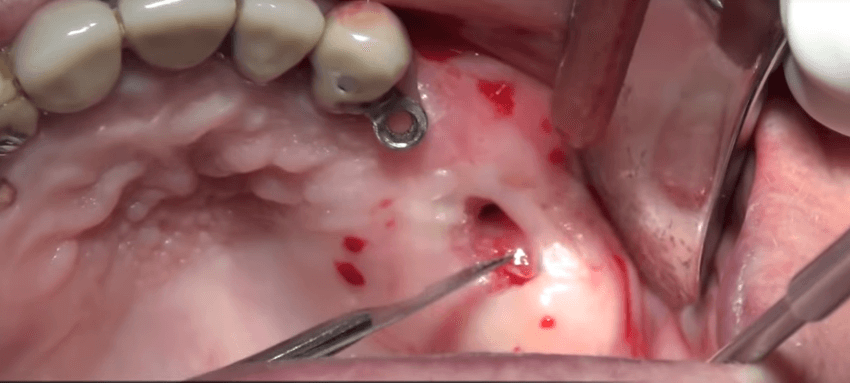Definition: OAF is a disorder where the maxillary sinus is exposed to the oral cavity through an epithelized unnatural communication between the maxillary sinus (antrum) and the oral cavity. It should be differentiated from oroantral communication (OAC) which is left untreated unless it progresses into OAF.
Aetiology (Causes):
- Traumatic: Surgical:
- Dental extraction of 2nd pre molar or 1st molar tooth.
- Excision of dental cyst.
- Radical antrum operation.
- Accidental: penetrating wounds.
2. Inflammatory: osteomyelitis and syphilis.
3. Neoplastic: cancer maxilla.
Clinical picture of OAF
Symptoms:
- History of dental extraction.
- Nasal regurgitation of liquids.
- Unilateral offensive nasal discharge.
- Bad taste in the mouth.
Signs:
- The fistula may be large enough and seen through the oral cavity at the site of the extracted tooth.
- Purulent discharge may be seen coming through the fistula into the oral cavity.
- Unilateral purulent offensive nasal discharge.
- Probing (introducing a probe through the fistula) should never be attempted.
Investigations:
- CT nose and PNS.
- X-ray panoramic view.
Treatment of Oro-Antral Fistula OAF:
TREATMENT DEPENDS ON THE TIMING OF THE DIAGNOSIS AND THE SIZE OF THE DEFECT.
- Small fistulae (less than 2 mm) may heal spontaneously.
- If discovered immediately after injury: direct primary repair with sutures.
- If discovered later (epithelization of the fistulous tract and migration of the oral mucosa into the fistula have occurred):
- Smaller than 1 cm: refreshing of the edges with curettage and direct repair with sutures.
- Larger than 1 cm: refreshing of the edges and coverage of the oral opening of the fistula with a palatal or buccal flap.
Summary and Key points
Oroantral fistula is essentially a preventable disease by proper dental extraction of the involved teeth. Diagnosis is mainly based on the history of dental extraction of upper teeth together with ipsilateral nasal discharge and regurgitation of fluids. CT is essential for the diagnosis and for planning treatment. Curative therapy is essentially surgical.

